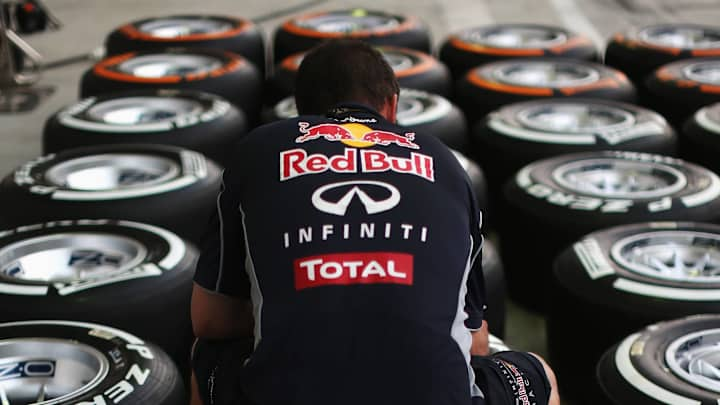F1 And Pirelli To Drop Potential 2026 Regulation Tyre Change

In a significant development for the 2026 regulation changes, the sport has decided to continue with the 18-inch tyre format into the 2026 season, abandoning the previously considered shift to 16-inch tyres.
Key Takeaways:
- The move to reduce tyre size to 16 inches for 2026 has been shelved in favour of keeping the current 18-inch tyres.
- Pirelli opposed the change citing significant practical and marketing challenges.
- Some modifications to the tyre's size and shape are anticipated, despite maintaining the 18-inch standard.

The sport's decision-makers, in conjunction with tyre supplier Pirelli, have opted against a proposed transition to 16-inch tyres for the 2026 season. The discussion around tyre size, a crucial aspect of the sport's technical framework, took centre stage at a recent meeting of the technical advisory committee, which saw participation from team representatives and the FIA.
The idea to downscale to 16-inch rims was initially floated as a strategy to lessen the overall car weight in alignment with the new technical regulations set to take effect in 2026. However, the proposal faced resistance from Pirelli who raised concerns about the feasibility of such a transition and its potential adverse effects on the sport's marketability and technological image. The switch to 18-inch tyres in 2022 was a step intended to mirror the developments in the broader automotive industry, aiming to position Formula 1 as a leader in innovation and style. A move back to smaller rims was perceived as a step backward in this regard.
Take part in the latest poll
Who would you rather see in a seat in 2025?
— Sports Illustrated F1 (@F1Briefings) March 14, 2024
While the consensus was to stick with the 18-inch tyre model, the discussions did lead to an agreement on fine-tuning the tyre dimensions, focusing on slight alterations in size and shape to enhance performance and compatibility with the new car designs.
"We are close to the final version of the sizes," Pirelli F1 boss Mario Isola told
Motorsport.com
.
"Obviously when you design the wheel, you have to consider all the package, brakes, wheel, suspension, tyre, so I believe we are close to the final sizes."
Isola elaborated on the preferences and the rationale behind them, stating:
"The discussion is between 16 and 18-inch tyres. And our preference is to stay on 18-inch tyres. And I believe that there are valid reasons to stay on 18-inch, with smaller tyres, but still the same rim.
"That's what we are discussing, just a bit smaller diameter, a slightly lower profile and slightly narrower tyre."
Addressing the topic of weight reduction and its impact on the decision-making process, Isola remarked:
"There is an element that is weight.
"And clearly that affects all the package, and also the wheels. The difference between 16 and 18 and a narrow 18 is not huge. So the weight element is there."
Isola also highlighted performance considerations, especially in terms of tyre overheating, as crucial factors in the decision-making process.
"But it's not the only element. There is an element of performance. Because obviously if you were to go to 16-inch tyres, much smaller, the risk of overheating is much higher. A smaller diameter means that you disperse the heat in a different way.
"And so there are many elements that if we wanted to design a tyre that is in line with drivers' expectations. For performance, the 18-inch tyre is better than the 16."
